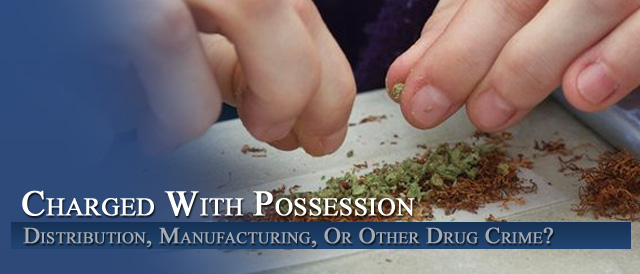




Meth: Understanding Methamphetamine and Methamphetamine Abuse
Fifty-eight percent of county law enforcement agencies surveyed by the National Association of Counties in 2005 listed methamphetamine as the number one drug problem in their area. States as diverse as Arkansas, Indiana, Vermont, and Wyoming reported increases of more than 90 percent in methamphetamine arrests in the prior year.
Cheap, easy to manufacture, and long lasting, methamphetamine has become more popular than cocaine in some U.S. cities.
Why is methamphetamine abuse such a growing problem?
Methamphetamine is a completely synthetic drug.
Refinements to inexpensive manufacturing methods in the 1980’s and 1990’s led to abuse in epidemic proportions in areas of the West and Midwest.
By the millennium, the drug had taken hold in the South and Midwest. While methamphetamine use has been consistently high in States such as California, Hawaii, Idaho, and Nevada, self-reported use among adults nationwide has risen from just under 2 percent in 1994 to around 5 percent in 2004.
A Specialized Approach
Everything about methamphetamine—from its composition to its manufacturing and distribution systems and the physical effect it has on its users—is unique.
Unlike imported drugs such as heroin or cocaine, methamphetamine is easy to produce domestically. It is synthesized from precursor chemicals using relatively easy production methods that are commonly available on the Internet or in underground publications; anyone with high school chemistry experience can “cook” methamphetamine.
Many of the base chemicals are household or farm products that are not feasible to regulate. However, other elements (ephedrine and pseudoephedrine products, and anhydrous ammonia) have come under serious scrutiny, and Federal and State legislation now monitors their sale and limits their availability
Unfortunately, as restrictions effectively close “Mom-and-Pop” operations—also known as small toxic labs or STLs—the demand for methamphetamine remains. Law enforcement in many areas reports increased evidence of organized drug traffickers, largely from Mexico, covering the established demand.
Although the number of small “Mom-and-Pop” labs is far greater than the number of superlabs (labs capable of making 10 or more pounds of product at a time), the Drug Enforcement Administration (DEA) states that the bulk of methamphetamine on the U.S. market comes from superlabs concentrated in the Central Valley and southern areas of California or in Mexico.
Data show that the presence of superlabs in the United States is expanding.
Meth Labs
Detection of Meth laboratories is difficult due to their clandestine placement in rural settings where law enforcement resources are limited. Criminal investigations are also hindered by the fact that—unlike sales of crack and heroin—most methamphetamine sales take place indoors, out of the view of police surveillance.
Much of the methamphetamine produced in “Mom-and-Pop” labs is consumed by the manufacturers or sold to a very small group of friends or acquaintances. This close-knit distribution system impedes law enforcement officers’ ability to use traditional investigative methods to infiltrate a distribution group and identify offenders, target laboratories, and take down operations.
Methamphetamine laboratories also pose a danger to law enforcement. The use of toxic and combustible chemicals makes executing search warrants at meth laboratories a dangerous undertaking. Whether the laboratory is raided by investigators or encountered by accident during the course of an operation, first responders and police agencies require specialized training and equipment.
Hermetically sealed hazmat suits, licensed contractors, and specialized training in how to safely process the scene are expensive resources that are in limited supply in local law enforcement agencies.
Child protection service agencies across affected areas are inundated with cases involving the removal of children endangered by chemicals and toxic fumes. Child neglect cases also abound in areas where methamphetamine use and production exists.
Methamphetamine laboratories also contaminate surrounding property. About one pound of methamphetamine produced in a clandestine lab yields 5 to 6 pounds of hazardous waste.
The resultant environmental damage to property, water supplies, farmland, and vegetation where labs have operated costs thousands of dollars in clean up and makes some areas unusable for extended periods of time. Damage to some areas is extensive.
The Methamphetamine Abuser: Not Your Ordinary Addict
Available data on typical methamphetamine users reveal that most are white, are in their 20’s or 30’s, have a high school education or better, and are employed full- or part-time.
Methamphetamine is used by housewives, students, club-goers, truckers, and a growing number of others. Almost as many women as men use methamphetamine (55 percent male, 45 percent female.)
But a methamphetamine user is not the typical drug user. That is because methamphetamine has acute toxic effects that produce long-term problems for the user and those around him/her.
It is a powerful central nervous system stimulant that promotes the release of neurotransmitters that control the brain’s messaging systems for reward and pleasure, sleep, appetite, and mood. However ingested (injected, taken orally, or snorted), methamphetamine produces extended highs and potentially agitated or over energized states.
Chronic use of methamphetamine causes long-term alterations to users’ brain chemistry and structure that result in impaired memory, mood alterations, impaired motor coordination, and psychiatric problems, even long after terminating use. The short-term management of the agitated user at arrest and the long-term health problems that jails and lock-ups must deal with make methamphetamine users a serious logistical and financial burden, particularly in areas with limited manpower or resources.
Meth Matters
Methamphetamine is cheap and easy to manufacture, and profit margins are high. Its powerful stimulant effect has made it more popular than cocaine in many areas. It is a drug that appears to move easily into new areas not typically associated with drug trafficking, where smaller labs serve local groups of users. As a demand or market is established, however, more organized manufacturers and distributors are attracted.
Other Articles of Interest:
- Understanding the Forms of Methamphetamine and The Federal Sentencing Guidelines
- A Closer Look At The Miranda Decision – Miranda Rights And Police Questioning In The Jail
- Comprehensive List Of Colorado Drug Crimes – Offenses
- FAQ: Colorado Criminal Drug Crimes Laws – Child Abuse and Drug Crimes – Child Abuse Charges In Drug-Endangered Homes
- Colorado Criminal Law – Giving Drugs To Someone You Know – Dangerous – Risky












